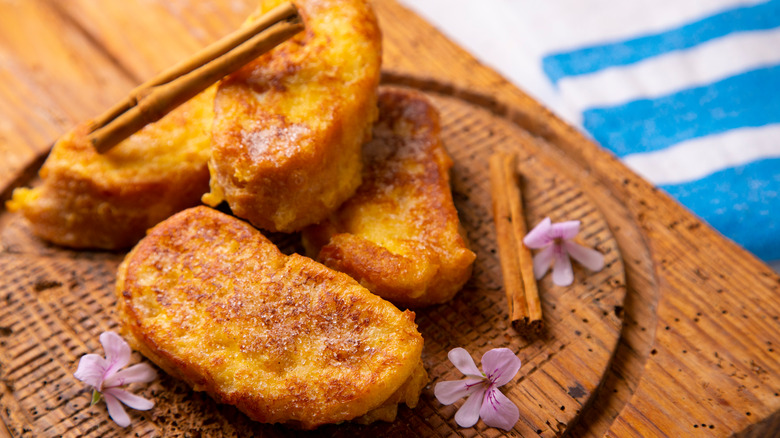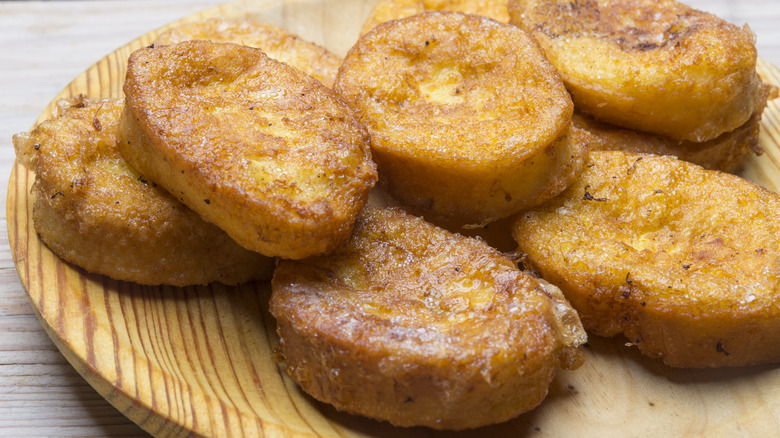The Fascinating History Of Spanish Torrijas
Of all the ways to use up bread that's about to go stale — or already has — French toast has got to be one of the most delicious (though certain types of bread are definitely better to use for this dish than others). Sure, breadcrumbs are extremely useful, panzanella salad is tasty if you've got tomatoes on hand, and ribollita soup is a great idea if you're looking for a hearty meal, but French toast always sounds good — and we typically have the ingredients needed on hand.
Consisting, with minor variations, of thick slices of slightly stale bread soaked in an egg-and-milk mixture and then pan-fried in butter, this dish is so tasty yet practical — that it exists in a multitude of countries — under different names, of course. In France, ironically enough, the breakfast treat is called pain perdu; In England, eggy bread; And in Spain, it goes by the moniker torrijas.
This Spanish French toast dates back to Roman times
If you've traveled in Spain, you may have come across torrijas, a dessert that's basically the Spanish equivalent of French toast (via Spanish Sabores). Made by soaking stale bread in a mix of milk, eggs, and sugar, and in some cases wine or honey, torrijas are fried in olive oil — not butter — likely because Spain is the top producer of the rich, golden stuff worldwide (via Culture Trip).
Early versions of the dish have existed since ancient Roman times, but it was during the Middle Ages that it became a traditional Lent food for observant Catholics to enjoy while abstaining from meat after 15th-century nuns popularized the dish as a satisfying option for the poor (via Amigo Foods). Cheap and satiating, torrijas were a good way to fill up during the 40-day period and were typically consumed with wine as a metaphor for the body and blood of Christ, explains Culture Trip. The sweet fried toast also emerged as a go-to source of nourishment for pregnant women and new mothers postpartum in the 16th century as its calorie-rich composition made it great for recovery and boosting energy (per Culture Trip).
Today, torrijas are still a common dish in Spain. But, no matter where you are, you can enjoy them in your own home by swapping out butter for olive oil, if you choose — and by putting on some flamenco music.

